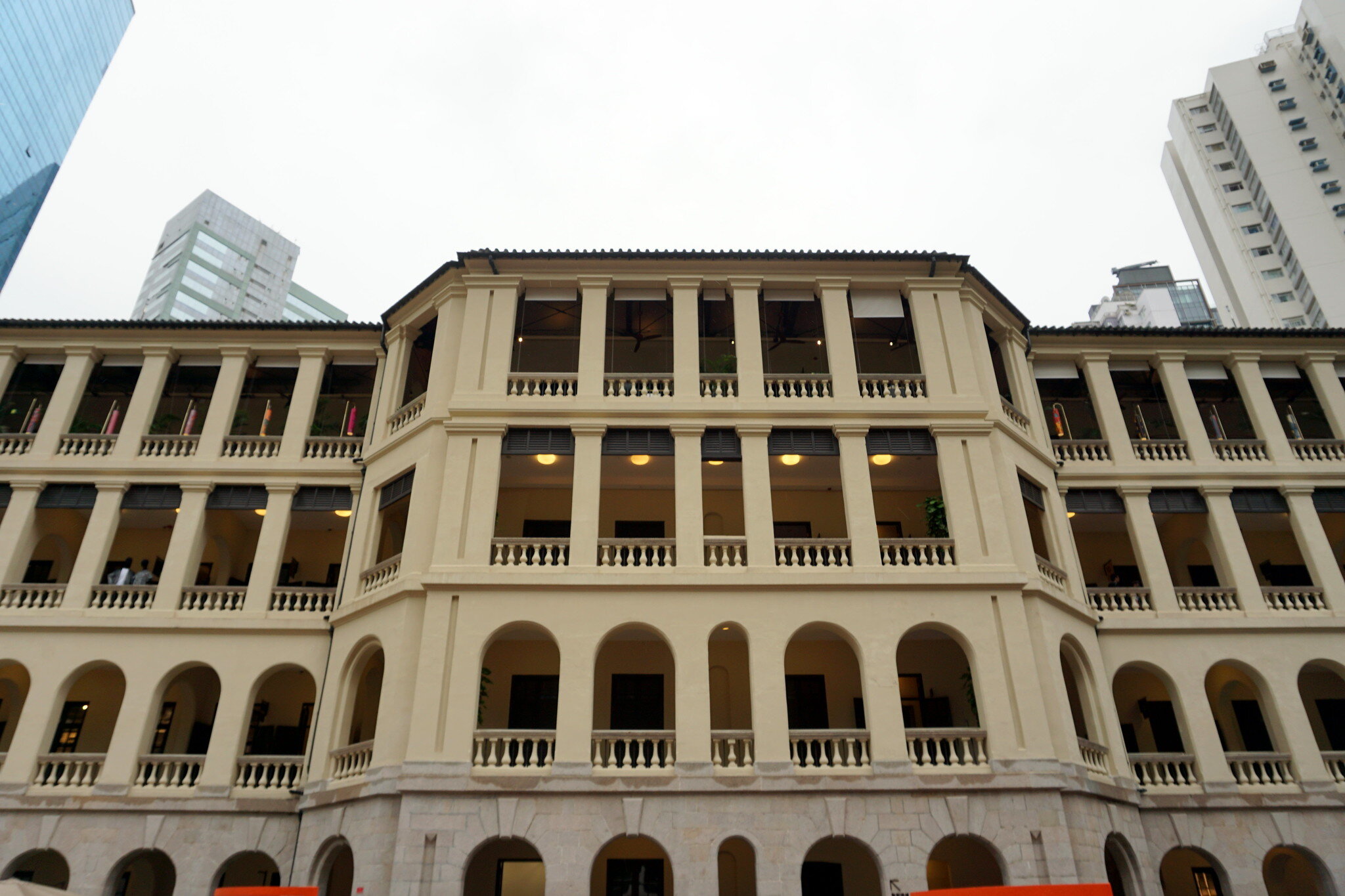Tai Kwun Centre for Heritage and Arts, Hong Kong
Emergence of Contestation: 2018
Tai Kwun police station was redeveloped and opened to the public in 2018, and comprises three former surveillance apparati: the central police station, the central magistracy and Victoria Prison. At first, in the courtyard of the beautifully renovated compound, one sees mostly the American bars and French restaurants, with spaces for shops selling all kinds of crafts and design materials, and, in the upper part of the complex, a gallery for contemporary art. In the buildings, there are a number of signposted notices pertaining to the history of place, as well as a visitor centre that guides you into the overall history of the buildings. History is thus here not hidden but clearly labelled, but judgement on its status remains cautious.
Art in Former Military Sites: Spectres of Geopolitics in Southeast Asia - Gabriel Gee
Qijin Kitchen, Kaohsiung
Qijin kitchen is a project developed by the Taiwanese artist Wu Mali in Kaohsiung, the main harbour city in the south of Taiwan. The kitchen is located on Qijin island, a thin band of land that separates the inner bay of Kaohsiung from the ocean. The history of Kaohsiung harbour is tied to the island’s position at the top of the Southern China seas. Qijin island has been for many centuries populated by fishermen, and today is made to stand for a ‘vernacular Taiwan’, a glimpse into the pre-industrialized world. This is a false impression, as the population, in the past as today, is made up of migrants sailing the waves of history, and consuming foodstuffs from well beyond Taiwan's current borders.
Art in Former Military Sites: Spectres of Geopolitics in Southeast Asia - Gabriel Gee
Kinmen Islands
Emergence of Contestation: 2013
In 2004, the contemporary art and heritage programme was devised for Kinmen Island, just off the coast of China. The island was a territorial bastion of the Republic of China, and was covered in bunkers and other paraphenalia associated with Cold War front lines, to the extent that it has been christened as 'Taiwan's DMZ' (LINK). After China's opening and reform, and the relative appeasement over the straits that marked the turn to the 21st century, the site was identified as a significant space in which to engage with dark memories and heritage, and consider an alternate construction of the future.
Art in Former Military Sites: Spectres of Geopolitics in Southeast Asia - Gabriel Gee; J.J Zhang
Centre for Contemporary Arts, Singapore
Emergence of Contestation: 1960s
The Centre for Contemporary Art in Singapore opened in 2013 in a series of white buildings, neatly spaced out in a green environment near the Pasir Panjang district. While the seeming archetype of a white cube neutral settings, the cluster of white buildings were originally the Gillman Barracks, erected in 1936 as part of a large military zone complete with schools, hospital facilities and residential housing. They were handed over to the Singaporean State following its declaration of independence in 1965, before being repurposed into an aesthetic abstraction bordering on the decorative.
Art in Former Military Sites: Spectres of Geopolitics in Southeast Asia - Gabriel Gee
Ainu Remains
Emergence of Contestation: 1869
The Ainu human remains stolen from Hokkaido gravesites for scientific purposes in the period of the Japanese colonisation of Hokkaido are presently still housed in museum collections across the globe, provoking protest from Ainu activists who demand their return. The remains themselves have become sites of memory through which Japanese colonial amnesia is challenged.
Stolen Ainu Remains as Sites of Memory - Michael Roellinghoff
Tsugaru Storytelling
The "Wa no mukashi-ko" storytellers from the Tsugaru region in Aomori construct heritage through inherited oral folklore recited in dialect, which they adapt and pass on to the local people. This vernacular tradition stands in contrast with the hegemonic discourse of authenticity linked to the region through narratives manufactured in the country's centre in Tokyo.
The Inheritance of Voice, Intentionality, and Provincial Japan: Storytelling in Tsugaru - Joshua Lee Solomon
Christian Sites of Nagasaki
Emergence of Contestation: 1600s, 2018
The Nagasaki region features a number of historic sites of hidden Christian worship. The sites serve both the goals of institutional tourism as internationally recognised Japanese heritage, and the narratives of local guides as sites of importance to rural folk culture. Neither narrative can be considered the dominant one.
World Heritage, Tourism, and Cultural Intimacy in Nagasaki - Raluca Mateoc














